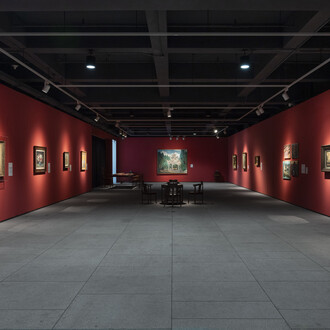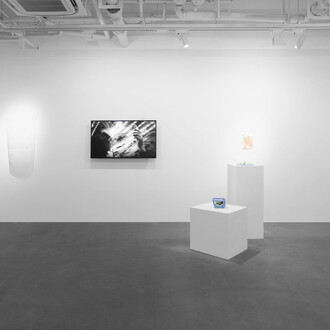From 18th May to 14th July,2019, Long Museum (West Bund) will launch a large-scale solo exhibition "Phoenix Art from the Ashes" by artist Xue Song. The exhibition is curated by Jeffrey Spalding, presenting Xue Song's artistic creation spanning more than 30 years. The exhibited works include Xue Song's early collaged inscriptions as well as works that continue developing and reshaping. Among them are: "Dialogue with masters series", "History and reality series", "City and youth series ", "Traditional landscape series", "Foam Series" etc.
Responding to the magnificent, grand spaces of the vast main exhibition hall of Long Museum (West Bund), this exhibition will present the latest work of Xue Song, "Gene genealogy". This large-scale creation consists of 100 small works, each of them is a Chinese surname, which together spell out a map of China. From his earliest art student days, he has been enamoured by the form of written text. In the western world 'penmanship' is a topic of the long-forgotten past, typewriters, computers and now voice messaging translators have all but eradicated the handiwork of handwriting. Xue Song holds on. He loves the formal appearance of hand-written text in all its forms: ancient and current. It is the leitmotif to his art.
Xue Song collects historical and cultural images printed in books, publications, newspapers, etc. These resources are torn, burned then collaged to assemble intricate mosaic-like works that offer a staggering number of diverse themes, richly reflecting regional characteristics. It is a continuation of his career-long fascination and commitment to further development. The exhibition will showcase a group of "Shanghai Postcards" ( 8 spells ). Xue Song has lived and worked in Shanghai for more than 30 years; his work expresses deep affection for the city. Through this group of works, the audience will see a vivid and rich "Shanghai style map" of the era and historical culture.
Xue Song's art is a kind of rebirth, he attempts to re-make art from its abandoned ruins to form something new, fresh, individual and deeply personal. His art offers an emblem of a contrived ritualistic scorched earth policy. The studio fires in early 90s consumed some of the works of Xue Song. These initial fires and ongoing ritual cleansings and burnings of art history texts have created raw material, when mixed with painting medium to produce the black lines that outline his work.
Xue Song is knowledgeable and appreciative of the centuries-old distinguished painters and calligraphers of China and Asia. He was among the first wave of Chinese artists to embrace the complex weave of 19th and 20th Century western modernism. The work of Xue Song ransacks art history, shamelessly quoting, appropriating and overpainting images from a glorious legacy. He proffers the re-birth of art and himself by admixing western and Asian art history into a palpable paste.
















